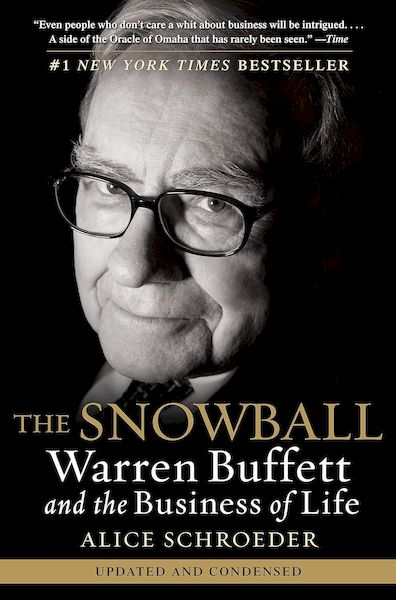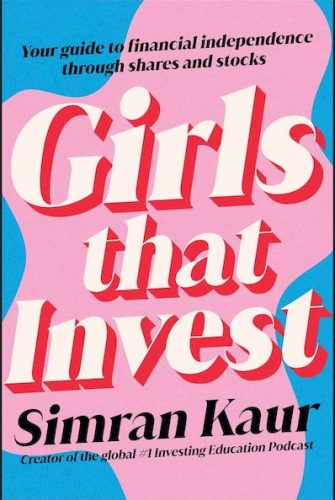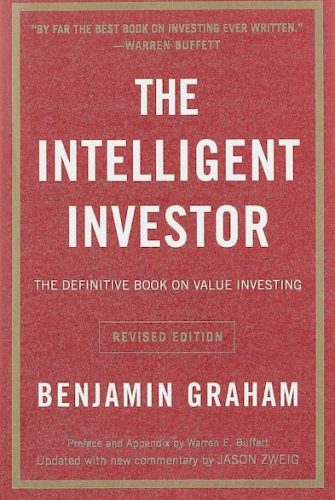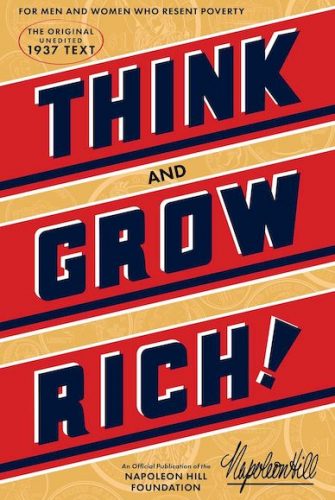The book is a biography of Warren Buffett, one of the most successful investors in the world. It chronicles his life from his early days as a child obsessed with making money to his current status as the world’s richest person.
Buffett is known for his value investing philosophy, which involves buying stocks of companies that are undervalued and holding them for the long term. He has been remarkably successful with this approach, and his Berkshire Hathaway company has grown to be one of the most valuable in the world.
Overall, The Snowball is a fascinating look at the life and career of one of the most successful businessmen in history. It is a must-read for anyone interested in investing, business, or personal finance.

Here are some key takeaways from the book:
- Warren Buffett is a brilliant investor who has achieved remarkable success through his value investing philosophy.
- He is also a complex and interesting person who has led a fascinating life.
- The book is well-written and engaging, and it provides valuable insights into the world of investing and business.
Summary: ‘The Snowball: Warren Buffett and the Business of Life’
Warren Buffett independently accrued his immense fortune. Rather than immersing himself in Wall Street’s hustle and bustle, Buffett operates from Omaha, Nebraska, a quaint city in the heartland of the U.S. Throughout his career, Omaha has served as Buffett’s base, in stark contrast to how the wider business community regards it. Buffett’s arduous scrutiny of the stock market and the realm of commerce, meticulously studying individual companies and their potential for growth and earnings, has been instrumental in his unparalleled wealth acquisition.
“Warren Buffett was a man who loved money, a man for whom the game of accumulating it coursed through his veins like his lifeblood.”
Buffett’s investment philosophy, derived from his mentor Benjamin Graham, is remarkably uncomplicated: Identify companies with stock values priced below the organization’s “intrinsic” value and invest accordingly. Buffett disregards the market’s transient fluctuations and prioritizes long-term investments, focusing on companies with robust business fundamentals and the potential to yield superior earnings year after year. Through this straightforward approach, he forged his fortune. Nevertheless, Buffett’s legendary prowess in discerning successful businesses from failures is far more easily described than accomplished. How did Buffett attain the status of the world’s premier company evaluator and stock-picker?
“Whenever Buffett entered a room, a palpable aura of influence surround him. People were captivated by his presence, yearning to be in his proximity and often left awestruck or speaking inane remarks.”
The answer lies in his relentless pursuit, from an early age, of becoming a millionaire. A photo from Buffett’s childhood captures him proudly displaying his beloved toy, a nickel-plated change-maker. As he matured, Buffett fervently assimilated every ounce of knowledge about business and investing, pouring over decades-old publications and newspapers. His surpassing of his initial financial goal bears testament to his foresight, unwavering focus, and idiosyncratic approach to financial success. His tale encapsulates the classic American narrative of diligence leading to unprecedented success. His transformation from a child aspiring to amass a million to doing so — and more — is truly extraordinary.
The Early Years
The Buffett family members were honest, matter-of-fact Nebraska tradespeople. Warren’s father, Howard, worked in his father’s Omaha grocery store before venturing into the world of insurance. Warren Edward, his second son, was born at the commencement of the Great Depression in 1930. While the country was grappling with economic turmoil, Howard established a winning stock brokerage, Buffett, Sklenicka & Co. Launching such a venture when stocks were being shunned required significant fortitude, but Howard’s business flourished from the outset.
“Howard Buffett swiftly established himself as possibly the most understated congressman to represent his state.”
An exceptionally precocious child, Warren harbored a fondness for numbers and collections, hobbies that would serve him immensely in the future. From a young age, Warren engaged in business ventures, initially selling packs of gum to his neighbors and later venturing into the sales of golf balls he retrieved from the lake at Omaha’s Elmwood Park golf course. He also sold popcorn and peanuts at local football games, conscientiously saving every penny he earned. Even in his youth, Warren poured over all the investment resources at his father’s office and earnestly absorbed the contents of his favorite library book, One Thousand Ways to Make $1,000. He made a personal vow to achieve millionaire status by the age of 35.
“For Warren, every dollar represented as ten dollars in the future, compelling him to spend prudently.”
In the 1940s, Howard, a fervent Republican, secured a seat in Congress. The family relocated to Washington, D.C., where Warren commenced junior high school and undertook a job as a newspaper delivery boy. By the age of 14, he had amassed $1,000. Through diligence, he doubled his savings and purchased a 40-acre tenant farm in Nebraska. As a teenager, Warren ventured into the pinball business, procuring and installing machines in local barbershops. He also pursued handicapping horse races and authored a tip sheet titled Stable-Boy Selections.
“He never indulged in leisurely pursuits such as backyard barbecues or stargazing. For Warren, a stargazing session would entail beholding a dollar sign in the Big Dipper.”
Subsequently, Warren had a brief stint at the University of Pennsylvania, which he found unsatisfactory. His disappointment culminated when his application to Harvard was rejected. Eventually, he gained admission to Columbia. University, where he enrolled in courses taught by Benjamin Graham, the renowned author of The Intelligent Investor. He swiftly established himself as Graham’s standout pupil. Warren absorbed and committed to Memory Security Analysis, the influential book co-authored by Graham and Columbia professor David Dodd.
“Buffett possessed an upbeat outlook regarding the long-term economic prospects of American business.”
During this period, Buffett was an active investor on Wall Street, concentrating on businesses that maintained low expenses and consistently generated profits, such as GEICO, an insurance company specializing in selling policies over the phone. Initially acquiring 350 shares, he later expanded his holdings extensively. Following his graduation, he returned to Omaha, where he traded stocks for his father’s company and lectured on investment principles at the University of Omaha. He married a compassionate and empathetic woman named Susan (“Susie”) Thompson. By 1951, Buffett’s capital amounted to $19,738, which he proceeded to invest and reinvest.
“The mere mention of Buffett’s stock acquisition alone could significantly impact its price and revaluate a company by hundreds of millions of dollars.”
Living frugally off his earnings as a stockbroker and part-time educator, Warren demonstrated a thrifty nature. He would only wash his car when it rained to save on water. In 1953, Warren and Susie welcomed their first child, Susan Alice, affectionately known as “Little Susie”. They later had two sons, Howard and Peter.
“Buffett’s testimony in Congress as the reformer and savior of Salomon had transformed him from a wealthy investor into a hero.”
In 1954, Buffett and his young wife relocated to New York, where he commenced work at Graham’s investment firm, the Graham-Newman Corporation. He fully embraced Graham’s investment approach, focusing on companies’ net worth and purchasing stock in undervalued firms. Graham referred to such entities as “cigar butts.” Buffett extensively studied Moody’s and Standard & Poor’s and quickly gained fame at Graham’s firm for consistently recommending excellent buys. Buffett acquired a valuable lesson about “capital allocation” – the strategic placement of funds to yield the highest return. This principle became a cornerstone of his investment strategy. When Graham retired, he offered Buffett a partnership to retain him at the firm. However, with Graham’s departure from the scene, Buffett saw no reason to stay and relocated his family back to Omaha.
“Buffett would undertake nearly anything from his short roster of most-disliked tasks – engaging in a confrontational, critical dispute; terminating someone; severing a carefully cultivated long friendship; consuming Japanese cuisine…nearly anything – [rather] than tarnish his reputation.”
Buffett Associates Ltd. By 1956, Buffett’s wealth totaled $174,000. Despite being just 26 years old, he aimed to retire and subsist on the investment income from his nest egg. He invited friends and relatives to benefit from his investment acumen. Six initial partners, including his father-in-law, Doc Thompson ($25,000), his Aunt Alice ($35,000), and his sister Doris and her husband ($10,000), became part of the new Buffett Associates Ltd. With Warren as the seventh partner, he levied his new partners a management fee of “half the upside above a 4% threshold” and “took a quarter of the downside.” The partnership quickly attracted additional members and generated substantial profits. Buffett subsequently established numerous partnerships with other investors, including lawyer Charlie Munger, who also operated his own investment company, and eventually became Buffett’s primary partner. With substantial returns from each partnership, Buffett consistently reinvested his earnings, steadily expanding his wealth. His “snowball” of wealth was beginning to grow significantly.
“In the short term, the market is a voting machine. In the long term, it’s a weighing machine.”
By 1958, Buffett was managing over a million dollars annually and striving to outperform the Dow by 10% each year. His exceptional performance led to a shift where he no longer actively recruited new partners. Anyone seeking his investment counsel had to seek him out. In 1962, Buffett consolidated his partnerships into Buffett Partnership Ltd. (BPL), with assets totaling $7.2 million. Warren was now a millionaire. His initial $3 million investment in American Express yielded substantial returns, while his investment in Berkshire Hathaway, a New England textile company, initially underperformed. Purchasing 2,000 shares of Berkshire at $7.50 per share in 1962, he proceeded to acquire more. Over time, Warren acquired the company, as well as the Blue Chip Stamps Company, Illinois National Bank and Trust Company of Rockford, Sun Newspapers in Omaha, See’s Candy Company, and numerous other entities.
San Francisco Susie
As Buffett amassed considerable wealth for himself and his partners, Susie became actively involved in social causes, particularly advocating for Omaha’s disadvantaged black community. She also pursued a budding career as a part-time singer, carving out a life of her own while remaining a staunch supporter of her husband. By 1966, Warren’s wealth stood at nearly $10 million, but Berkshire Hathaway was struggling. Buffett attempted to sell it to Charlie Munger, who, despite respecting Buffett’s investment expertise, was not inclined to take ownership of a business Buffett did not desire. Ultimately, Warren shut down the Berkshire Hathaway plant and laid off its workers, transforming Berkshire Hathaway into his main holding company and primary corporate entity. By 1974, Buffett, with his diverse portfolio of companies, had emerged as a business tycoon, albeit a relatively small one. By 1977, his wealth exceeded $70 million at the age of just 47. However, Susie desired more opportunities and relocated to San Francisco, where she resided alone. Although she harbored deep affection for her husband, she yearned for a life beyond Omaha. Despite the physical separation, Warren and Susie remained devoted to each other, maintaining daily communication. In 1978, at Susie’s urging, Astrid Menks, aged 32, commenced caring for Buffett and eventually moved in with him. While their arrangement was unconventional, Buffett saw no need to offer explanations. It proved to be a harmonious arrangement for all involved.
Richer and Richer
Over the years, Buffett continued to expand his fortune, along with those of his partners and fellow investors. By 1980, with Berkshire Hathaway listed at $375 per share, Buffett celebrated a net worth of $680 million by 1983 and achieved billionaire status by 1985. In 1987, Berkshire Hathaway’s trading price reached $2,950 per share, propelling Buffett’s net worth to $2.1 billion and ranking him as the ninth-richest person in the United States. By 1991, he had ascended to the second-richest, with a net worth of $3.8 billion. Buffett’s initial partners had generated $3 million in returns for every $1,000 they had originally invested with him. Year after year, Buffett’s fortune, akin to a “snowball”, expanded exponentially. By 2008, he had risen to become the wealthiest individual in the world. Throughout his ascent, he exercised prudence in managing his expenses and investing astutely, consistently reinvesting his profits and allowing his fortune to grow through compound interest. Buffett consistently navigated the unpredictable stock market, particularly steering clear of the highs and lows of the high-tech sector. Acknowledging his limitations, he openly admitted, “The software business is not within my circle of competence… We understand Dilly Bars and not software.” By adopting this approach, he managed to avert the volatility of the high-tech industry, guiding the market on his terms.
The Salomon Brothers Debacle
While Buffett cherished his wealth, he held an even greater regard for his hard-earned reputation for honesty. In 1991, Salomon Brothers, a Wall Street investment bank in which Buffett and Berkshire Hathaway had a $700 million investment, put his integrity to the test. A Salomon executive, Paul Mozer, engaged in a series of rule-breaking bids when dealing with the U.S. Treasury. The revelation of his infractions caused uproar on Wall Street and implicated the firm in the scandal. Following Mozer’s actions, which were known to other Salomon executives, including CEO John Gutfreund, the firm’s stock plummeted.
“Balzac said that behind every great fortune lies a crime. That’s not true at Berkshire.” (Buffett)
During this challenging period, Buffett assumed the role of Salomon’s interim chairman, effectively staking his reputation to rescue the firm. Globally renowned for his integrity and transparency, his decision to aid the Salomon Brothers prevented the firm from declaring bankruptcy. During his testimony before the U.S. Congress, Buffett expressed his uncompromising stance to Salomon’s executives, stating, “Lose money for the firm, and I will be understanding. Lose a shred of reputation for the firm, and I will be ruthless.”
Family Matters
In 2004, Buffett’s beloved wife Susie passed away from a cerebral hemorrhage. Two years later, he married Astrid Menks, his long-time live-in companion. In 2006, Buffett announced his plan to donate his Berkshire Hathaway stock, valued at $37 billion, with some 83% earmarked for the Bill and Melinda Gates Foundation to “enhance the world”. Buffett chose not to seek any personal recognition from the Gates Foundation. He imposed just one condition: to swiftly allocate the funds to assist people in distress.
About the Author
Alice Schroeder, initially a CPA, transitioned to a well-regarded research analyst. Impressed by her writing skills, Warren Buffett recommended that she pursue a full-time writing career instead.



